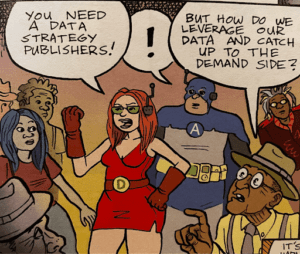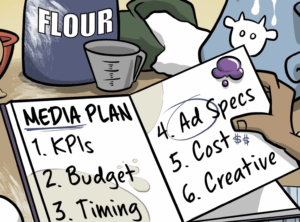“Data-Driven Thinking” is written by members of the media community and contains fresh ideas on the digital revolution in media.
Today’s column is written by JB Brokaw, president at Sociomantic Labs North America.
With the rampant spread of websites promoting fake news, hate speech and other malicious messaging on the web – often unbeknownst to the advertiser – brand safety has become of paramount concern for digital marketers.
JPMorgan Chase, for example, recently lowered the number of websites where its display ads are appearing to take more control over the content with which its brand is being associated. The company did not see much of a change in terms of cost or visibility.
While it may not always be so granular, the tactic of whitelisting — when advertisers create a defined list of sites that are approved to show their ads across — is used to impose more control on where ads run. However, whitelisting on its own is not an infallible solution to bad ad placement. It can impact performance and limit the ability to reach an ideal audience at the right place and time.
Defining Safe Content
Everyone acknowledges that brand safety is important, yet what exactly defines a brand-safe site? Does the danger stop at sites that spew hateful propaganda and fake news, or does it also extend to include certain social political or religious views where the lines of acceptance are blurred? With this lack of common ground, the practice of whitelisting becomes much more complex.
Furthermore, a whitelist is not a guarantee that a brand will never appear next to bad content. For example, an ad for a travel brand appearing on The Wall Street Journal may be great for business – until it appears next to an article about a plane crash.
The Issue Of Scale And Losing Sight Of The User
Programmatic display at its core targets individuals with personalized advertising to reach them when and where they are online. By narrowing the scope of where an advertiser’s ads are shown – for example, choosing not to run ads on ESPN because you are a beauty advertiser – marketers are potentially missing critical touch points with their customers and prospects.
That’s why marketers should focus on the individual’s online customer journey instead of limiting the number of sites based on what they subjectively think is appropriate or not. Another course of action is to implement a companywide blacklist to block sites that have undoubtedly malicious content and are bad for business. (I’m looking at you, Breitbart.)
Moving Toward A More Accountable Ecosystem
When it comes down to it, this brand-safety issue is about overcoming the shortcomings of our ecosystem. While whitelisting is an important weapon in our arsenal, there is still an issue of lack of transparency throughout the supply chain.
Ultimately, 100% brand safety can only be achieved if all parties in the chain work together. That is why organizations such as the Trustworthy Accountability Group, which combats this type of issue by holding publishers to a more stringent set of standards, are more important than ever. Advertisers must demand more transparency in their partnerships to ensure they are delivering ads across publishers that publish facts, not fiction.
Follow Sociomantic Labs (@sociomantic) and AdExchanger (@adexchanger) on Twitter.












